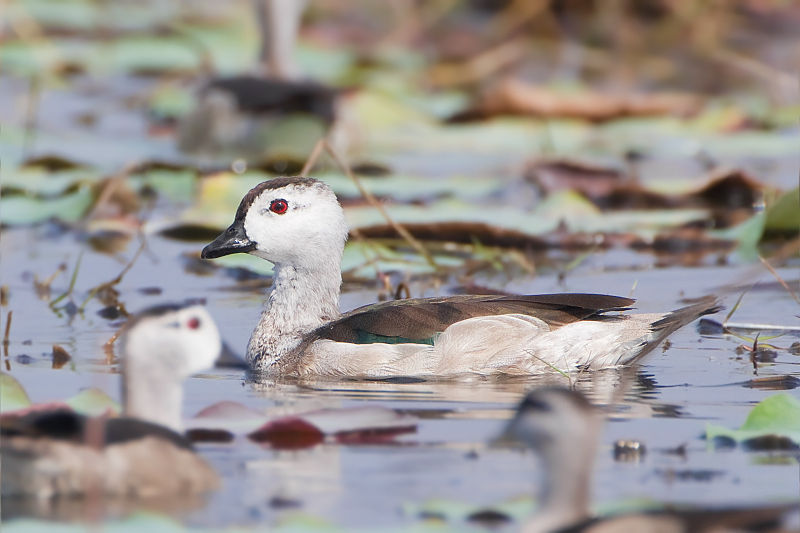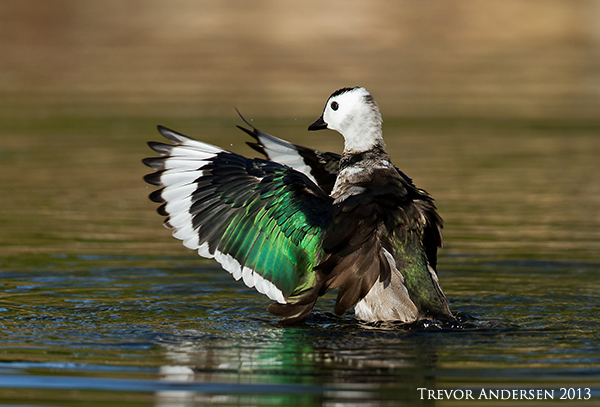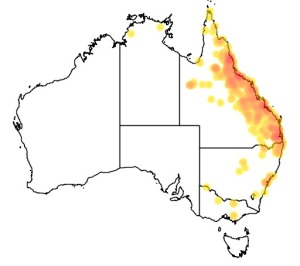Colours
Distinguishing features
White predominates in this bird's plumage. The bill is short, deep at base, and goose-like.
The male in breeding plumage is glossy blackish green crown, with white head, neck, and underparts; a prominent black collar and white wing-bar. It has a rounded head and short legs. In flight, the wings are green with a white band, making the male conspicuous even amongst the huge flying flocks of the Lesser Whistling Duck, which share the habitat.
The female is paler, without either black collar and only a narrow or nonexistent strip of white wing-bar. In non-breeding plumage the male resembles the female except for his white wing-bar. (Wikipedia)
Size
- From 35 cm to 38 cm (Length of specimen) - applies to Males
- From 33 cm to 38 cm (Length of specimen) - applies to Females
Wingspan
- Wingspan data is not yet available.
Synonyms
Distribution
Distribution and habitat preferences
It breeds in Pakistan, India, Bangladesh, southeast Asia and south to northern Australia.
It is largely resident, apart from dispersion in the wet season, but Chinese birds make long-distance migrations to winter further south.
This is an abundant species in Asia, although the slightly larger Australian race appears to be declining in numbers.
It is found on still freshwater lakes, rain-filled ditches, inundated paddy fields, irrigation tanks, etc. (Wikipedia)
Diet
Its food is chiefly seeds and vegetable matter, especially water lilies; also insects, crustaceans. (Wikipedia)
Web resources
References
- Simpson, K., N. Day and P. Trusler (2004). Field Guide to Birds of Australia: 7th Edition Penguin Group (Australia), Camberwell, Victoria.


